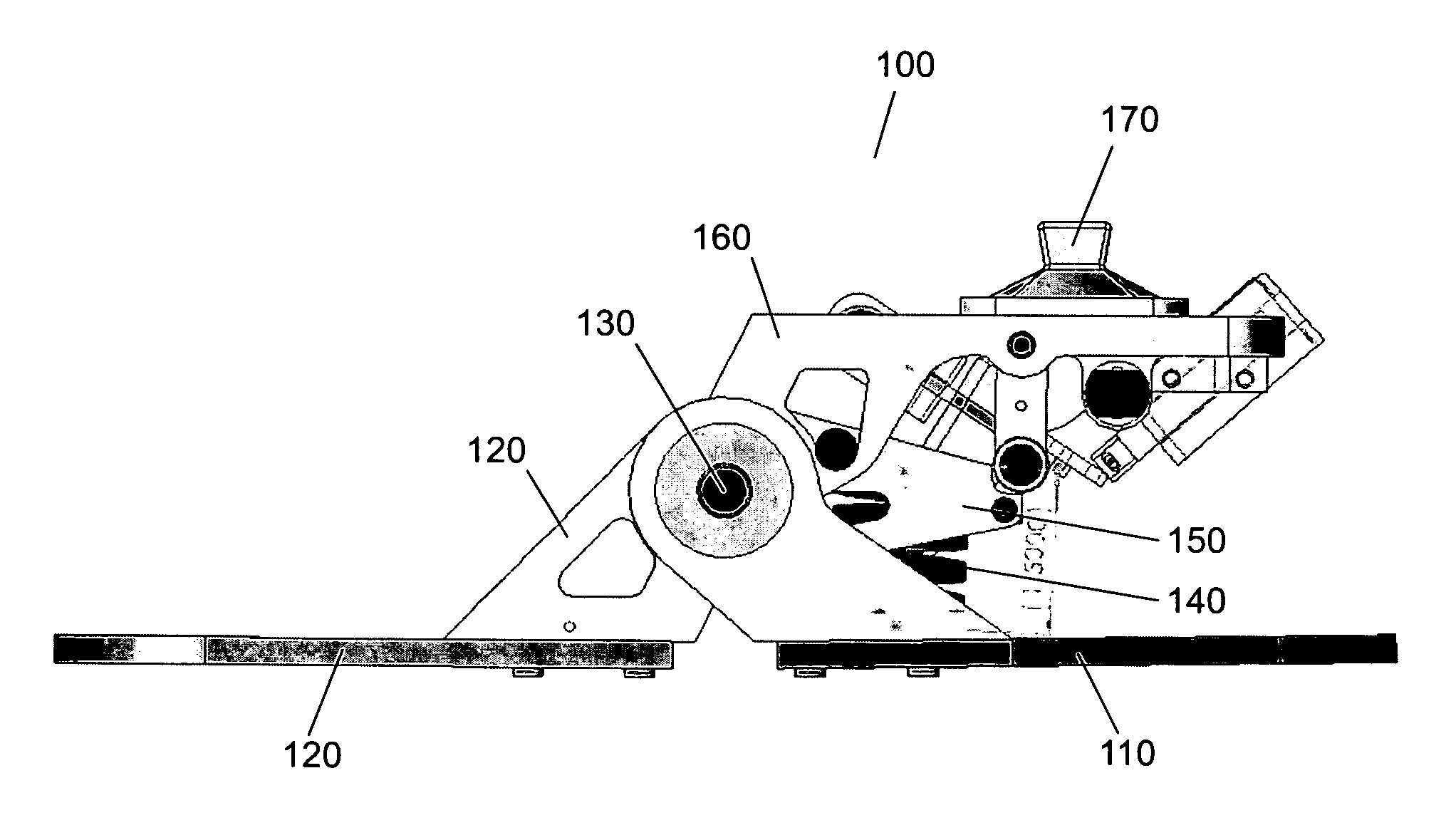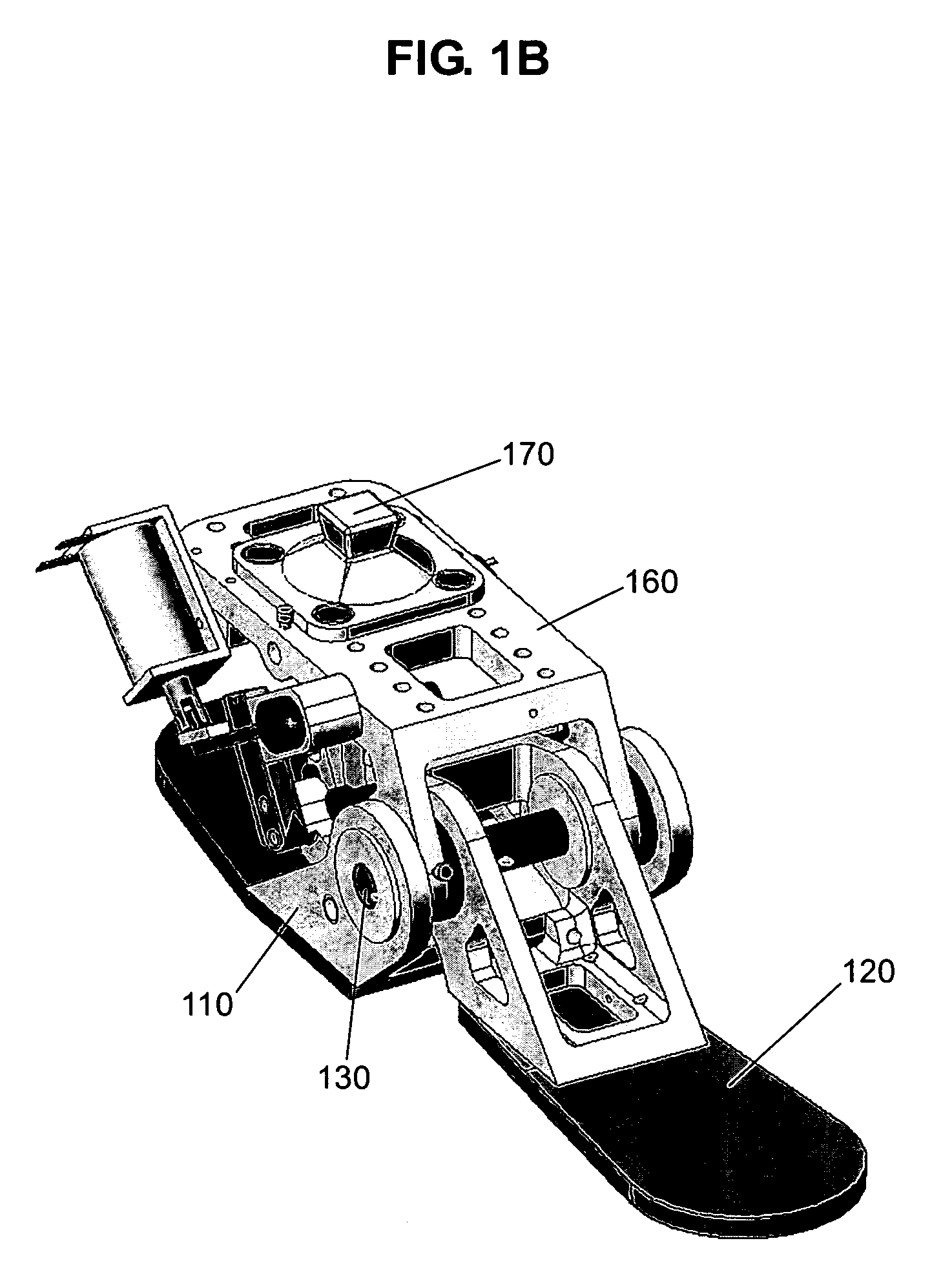Foot prosthetic and methods of use
a foot and prosthetic technology, applied in the field of prosthetic devices, can solve problems such as limiting their energy producing capacity, and achieve the effects of improving the energy efficiency of prosthetic feet, reducing energy required, and facilitating us
- Summary
- Abstract
- Description
- Claims
- Application Information
AI Technical Summary
Benefits of technology
Problems solved by technology
Method used
Image
Examples
example i
[0040] This example describes the use of a foot prosthetic simulator designed to demonstrate the conceptual advantage of a foot prosthesis utilizing an intelligent design. The simulator was worn on the lower extremity of an able-bodied subject, such that it immobilized the ankle and allowed the attachment of a variety of alternative artificial foot surfaces. It was similar to an ankle foot orthosis, except that it allowed able-bodied persons to simulate prosthetic gait. The primary attachment designed was a spring device which satisfied the mechanical requirements of a controlled-release storing prosthesis. A secondary attachment was designed, to roughly emulate a conventional energy-storing prosthesis. These attachments allowed a single human subject to compare the experience of walking with conventional and controlled-release energy storage, in both unilateral and bilateral configurations. Moreover, these conditions allowed comparison with the same subject's able-bodied gait. The ...
example ii
[0047] This example describes a proposed research protocol utilizing the prosthesis simulator. A simple set of experiments will be used to test the feasibility of controlled-release energy storage. These experiments will be performed on 12 able-bodied young human subjects. Subjects will be recruited by advertisement, with their informed consent and safety ensured. The experiments will test and compare subjects' gait with and without the prosthesis simulator, with and without controlled-release of stored energy. The outcome measures are the metabolic energy expenditure of at a given speed, as well as and ground reaction forces. The subjects will perform multiple walking trials at a given speed of 1 m / s, a slow and comfortable walking speed. These trials will be performed once overground in order to measure ground reaction forces, and then repeated on a treadmill to measure metabolic energy expenditure. The overground trials will also involve measurement of joint motions by a Optotrak...
example iii
[0053] This example describes an experiment with a prosthesis simulator. Humans actively push off with the trailing leg just before and during the double support phase of walking. Push-off compensates for the energy lost as the leading leg performs negative work during the transition between steps (see, e.g., Donelan, J M, et al. J Exp. Biol. 205: 3717-3727, 2002; herein incorporated by reference in its entirety). Simple models predict that the energy used in walking is strongly linked to the mechanics of this step-to-step transition; pushing off just before double support can theoretically reduce the step-to-step transition work by a factor of four (see, e.g., Kuo, A D. J. Biomech. Eng. 124: 113-120, 2002; herein incorporated by reference in its entirety).
[0054] Lower-limb amputees have a reduced capacity for ankle pushoff during walking (see, e.g., Whittle, M W. Gait Analysis: An Introduction, 1996; herein incorporated by reference in its entirety) contributing to a 20-30% greate...
PUM
 Login to View More
Login to View More Abstract
Description
Claims
Application Information
 Login to View More
Login to View More - R&D
- Intellectual Property
- Life Sciences
- Materials
- Tech Scout
- Unparalleled Data Quality
- Higher Quality Content
- 60% Fewer Hallucinations
Browse by: Latest US Patents, China's latest patents, Technical Efficacy Thesaurus, Application Domain, Technology Topic, Popular Technical Reports.
© 2025 PatSnap. All rights reserved.Legal|Privacy policy|Modern Slavery Act Transparency Statement|Sitemap|About US| Contact US: help@patsnap.com



